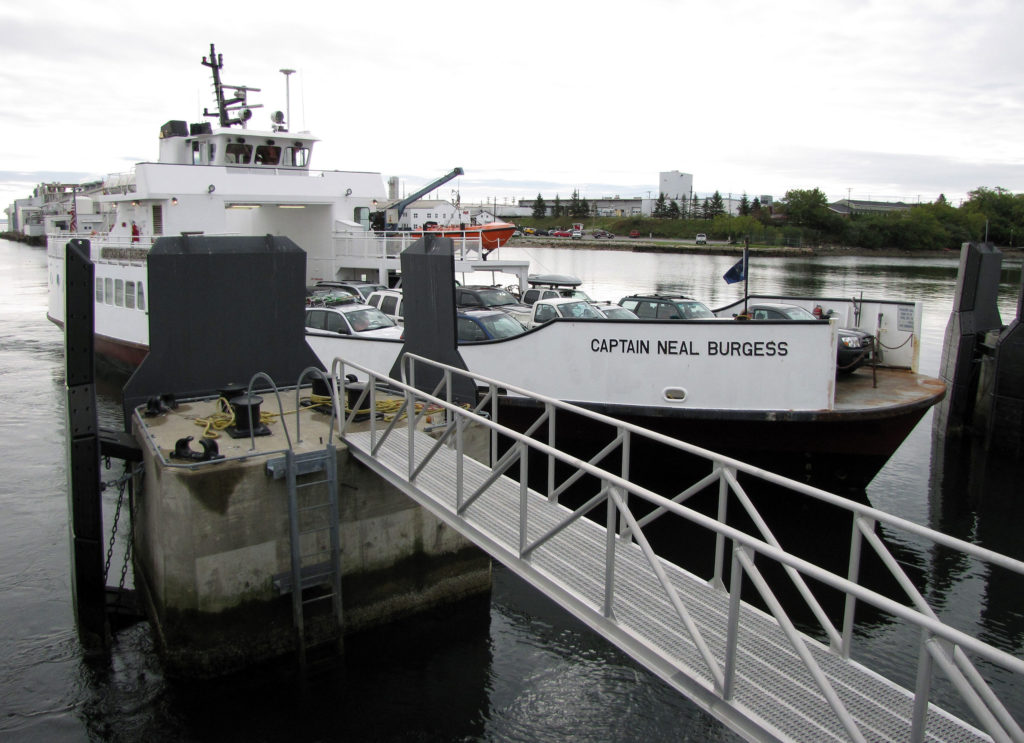Sixty-one percent of Maine’s population lives outside of an urban area. By this statistic (available with many more about the communities along the coast of Maine in Waypoints: Connect), Maine is the most rural state in the nation. In rural areas, accessing basic supplies and services can sometimes be a challenge. However, living on an island, accessibility takes on a whole new meaning. Maine’s unbridged islands rely on ferry services, water-taxis, and air service. These services are a vital resource; they are a lifeline to the mainland, providing a critical service for both medical emergencies and supply chains for island grocery stores.

Islanders’ reliance on ferries puts them in a situation that is different from a mainlander even during normal times. But as the COVID-19 pandemic has arrived in Maine, it has put a whole new list of considerations around the essential service these transit operators provide. Operators have a deep understanding of the importance of their service to the communities they serve and are dedicated to finding solutions that keep everyone safe while maintaining essential accessibility.
On March 26, 2020, the Island Institute held a virtual meeting of 12 of Maine’s ferry and water taxis operators to discuss their current challenges, policy changes, and give each other support in these unfamiliar times. Below are some of the topics from the discussion, much of which applies to air transport as well:

1. How to maintain separation of passengers on boats?
Some of the ferries are large enough to carry trucks while other boats are limited to foot traffic only. This has led to the need for some of the boats to reduce their passenger load to ensure people can keep the required six feet of distance from each other. This has also allowed some ferries to run with a reduced crew to protect individual staff from exposure.
2. How to protect the crew from getting infected?
If one crew member becomes sick, they are a risk for the rest of the crew and for the islanders. Some of the ferry services have reduced trips per day, so that they are able to separate crew members. In case of the exposure of a crew member, which would require anyone they worked with to also go into quarantine, there would be another crew member available.
3. How to deal with the loading and unloading of cargo?
Islanders are used to handling their own freight and lend a helping hand to a neighbor. This is often seen when the boat arrives with freight that needs unloading—community members assist the crew. But, because of the need for physical distancing, the operators have devised different methods for unloading that keeps community members at the appropriate physical distance from each other, and allows for minimal handling of freight and personal belongings.
4. How to get the supplies necessary to keep the boats sanitized?
In order to be extra cautious, many of the operators have begun sanitizing the boats after every trip. This requires supplies like bleach and spray bottles. Crew are required to wear gloves. Many operators are also working to offer passengers hand sanitizer or wipes as they board the boat, yet some are finding it difficult to get these supplies right now, especially hand sanitizer.
5. How to provide income for crew members given reduced hours and for those who have underlying medical conditions?
Ferry operations in Maine range in size from the fleet run by the Maine State Ferry Service down to single boat operations. These providers employ crew members and staff that keep the organizations running efficiently and effectively. As hours have been reduced and some workers have been forced to stay home due to high-risk conditions, the question of pay is a difficult one. Many operators have been working with employees to help them maintain as close to normal a level of income as possible. This has included paying the normal amount of wages even with reduced hours, helping employees file for unemployment, or connecting them with social services where appropriate.
6. How to handle the transportation of sick passengers
Every island has a different transportation infrastructure. Some have multiple ferry services and water taxis, while others have a single boat that also serves as emergency transport to mainland hospitals. Some are state-run ferries, while others are private businesses or nonprofit organizations. Each of these services is working to determine what their role is for transport of sick patients, particularly those with COVID-19 symptoms.
Difficult decisions lay ahead for all of us in the coming days and weeks. Ferry operators, water taxis, and air service providers are working hard to maintain as much normalcy as possible. By coming together to learn from each other, share experiences and ideas, and identify shared questions, these operators hope to keep their critical services running, keep their crews employed, and keep the island communities they service safe.


